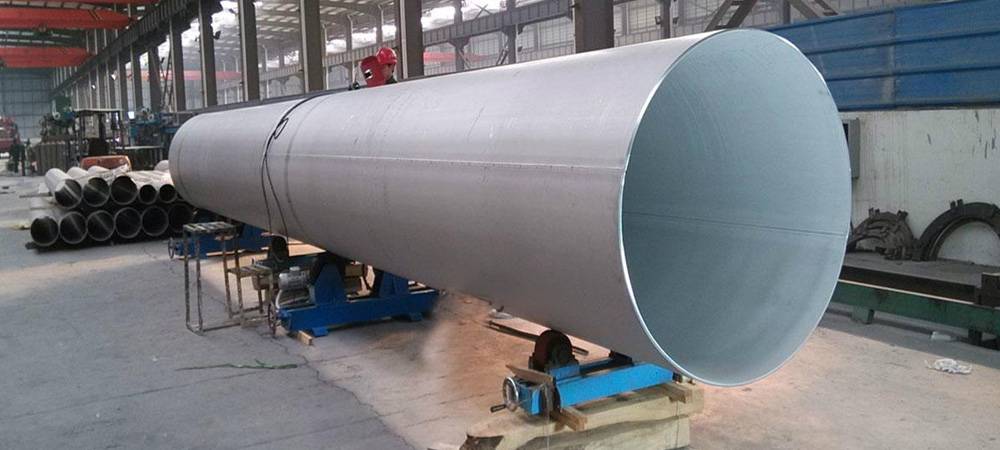tainless steel 304 pipes are renowned for their exceptional properties, making them a popular choice across various industries. This comprehensive guide will cover everything you need to know about stainless steel 304 pipes, including their composition, characteristics, types, applications, benefits, and maintenance tips. Whether you are an industry professional or a curious enthusiast, this blog will provide valuable insights into this versatile material.
Categories
- Materials and Manufacturing
- Industrial Applications
- Maintenance and Care
What is Stainless Steel 304?
Stainless steel 304 is an austenitic stainless steel that contains high levels of chromium and nickel. Known for its excellent corrosion resistance and formability, stainless steel 304 is widely used in a variety of applications. The standard composition of stainless steel 304 includes:
Chemical Composition
- Chromium (Cr): 18-20%
- Nickel (Ni): 8-10.5%
- Carbon (C): 0.08% max
- Manganese (Mn): 2% max
- Silicon (Si): 1% max
- Phosphorus (P): 0.045% max
- Sulfur (S): 0.03% max
Characteristics of Stainless Steel 304 Pipes
Corrosion Resistance
Stainless steel 304 pipes exhibit excellent corrosion resistance, making them ideal for use in environments exposed to moisture and corrosive substances. The high chromium content forms a passive oxide layer on the surface, preventing rust and corrosion.
High Strength and Durability
These pipes offer high strength and durability, able to withstand high pressure and temperature variations. This makes them suitable for both industrial and commercial applications.
Excellent Formability and Weldability
Stainless steel 304 pipes are known for their excellent formability and weldability. They can be easily fabricated into various shapes and sizes without compromising their structural integrity.
Aesthetic Appeal
The smooth, shiny surface of stainless steel 304 pipes adds a modern and clean look to any application, making them a preferred choice for architectural and decorative purposes.
Types of Stainless Steel 304 Pipes
304 stainless steel pipe comes in various forms to suit different applications. Here are the primary types:
Seamless Pipes
Seamless stainless steel 304 pipes are manufactured without a welded seam, offering a smooth and continuous surface. These pipes are ideal for high-pressure applications where structural integrity is crucial.
Welded Pipes
Welded stainless steel 304 pipes are made by welding the edges of steel sheets or strips together. They are more cost-effective than seamless pipes and suitable for applications where high pressure is not a primary concern.
ERW (Electric Resistance Welded) Pipes
ERW pipes are produced by welding the seam using electric resistance. These pipes are known for their high dimensional accuracy and uniform wall thickness, making them suitable for various industrial and structural applications.
LSAW (Longitudinal Submerged Arc Welded) Pipes
LSAW pipes are manufactured by welding the seam along the length of the pipe. These pipes are commonly used in oil and gas pipelines, where high strength and durability are required.
SSAW (Spiral Submerged Arc Welded) Pipes
SSAW pipes are created by welding a continuous spiral seam along the length of the pipe. These pipes are often used in large-diameter applications, such as water transmission and structural support.
Applications of Stainless Steel 304 Pipes
Food and Beverage Industry
Stainless steel 304L pipes are widely used in the food and beverage industry due to their excellent corrosion resistance and ability to withstand high temperatures. They are ideal for transporting food products, beverages, and water, ensuring hygiene and safety.
Chemical Processing
These pipes are used in the chemical processing industry for transporting chemicals and gases. Their resistance to corrosion and chemical reactions makes them suitable for this application.
Oil and Gas Industry
In the oil and gas industry, stainless steel 304 pipes are used for transporting crude oil, natural gas, and refined products. Their high strength and durability make them suitable for high-pressure applications.
Construction and Architecture
Stainless steel 304 pipes are used in construction and architecture for structural applications, including support beams, railings, and decorative elements. Their aesthetic appeal and robustness make them a popular choice.
Medical Equipment
These pipes are used in the medical industry for manufacturing medical devices and equipment due to their non-reactive nature and easy sterilization.
Heat Exchangers
Stainless steel 304 pipes are utilized in heat exchangers due to their excellent thermal conductivity and resistance to high temperatures.
Benefits of Using Stainless Steel 304 Pipes
Corrosion Resistance
One of the main advantages of stainless steel 304 pipes is their superior corrosion resistance, making them suitable for use in harsh environments.
Hygienic Properties
The non-porous surface of stainless steel 304 pipes ensures they do not harbor bacteria or contaminants, making them ideal for applications requiring high levels of hygiene.
Long Service Life
Stainless steel 304 tubes have a long service life due to their high durability and resistance to wear and tear.
Cost-Effective
Despite their premium qualities, stainless steel 304 pipes offer a cost-effective solution due to their long lifespan and low maintenance requirements.
Maintenance and Care for Stainless Steel 304 Pipes
To maintain the appearance and performance of stainless steel 304 pipes, proper maintenance is essential. Here are some tips:
Regular Cleaning
Clean the pipes regularly with mild soap and water to remove surface contaminants and maintain their shine. For stubborn stains, use a mixture of baking soda and water.
Avoid Harsh Chemicals
Avoid using harsh chemicals or abrasive cleaners that can damage the protective oxide layer on the surface of the pipes.
Inspect for Damage
Periodically inspect the pipes for any signs of damage or wear, such as cracks or corrosion spots. Address any issues promptly to prevent further degradation.
Conclusion
SS 304 pipes are a versatile, durable, and cost-effective solution for various applications across different industries. Their excellent corrosion resistance, high strength, and aesthetic appeal make them a preferred choice for many professionals. Proper maintenance can significantly extend their lifespan, ensuring they continue to perform effectively for years to come.


